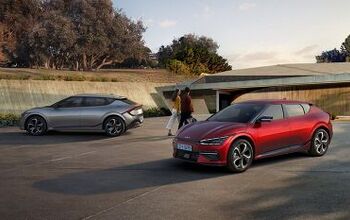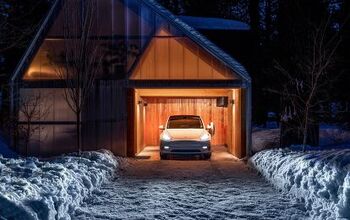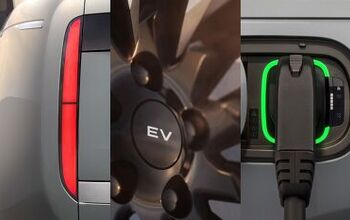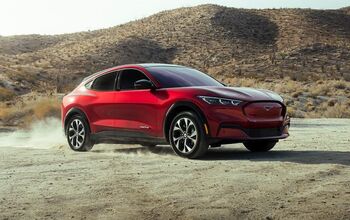Hyundai Ioniq Sales Are Low, Inventory Ramp-Up Is Slow, Kia Niro Is the One Making Dough
Since arriving early this year, Hyundai Motor America has managed only a meager 4,881 sales of its Prius-fighting Ioniq. Hyundai is certain there are far more Ioniq sales that could occur, however, if only Hyundai had the Ioniqs to sell.
Supply isn’t just tight — the Ioniq Electric is essentially nonexistent at Hyundai’s showrooms in California, the only state where it’s (supposed to be) available.
Yet while Hyundai awaits greater Ioniq inventory, the lack of which is clearly to blame for the low volume to date, it’s becoming increasingly obvious that Kia came out on top in this deal.
The Kia Niro is a crossover, albeit a low-slung front-wheel-drive crossover TTAC struggles to call a crossover, that’s selling 70-percent more often than the Hyundai.
It’s not as though Niros are plentiful on Kia dealer lots, but at least Kia dealers have Niros to sell. According to Cars.com, there are 5,200 Niros in stock in Kia’s U.S. dealer network; only 1,700 Ioniqs. While the Ioniq majors on fuel economy — its EPA combined rating is a Prius-beating 58 miles per gallon — the Niro tops out at 50 mpg and in some versions rises only as high as 43 mpg.
But maximum fuel economy is clearly not the main source of appeal here. Americans want SUVs and crossovers, and the Niro’s black sills and crossover profile, despite the fact that it’s all pretense, caters to America’s desire.
It won’t help matters that the Ioniq offers little price advantage. The basic Ioniq Blue is a $22,200 car, undercutting the Niro by only $1,585. It’s becoming abundantly clear that Americans are very willing to pay many thousands more dollars for the privileges of utility vehicle ownership. $1,585? That’s nothing to 2017’s crossover buyer.
For the time being, however, we can’t accurately measure just how successful the Niro is compared with the Ioniq. “Our biggest problem with Ioniq is we don’t have enough of them,” Hyundai Motor America vice president for product planning Mike O’Brien tells Wards Auto. O’Brien says the Ioniq’s only problem is insufficient supply.
Most people who are buying Hyundai Ioniqs are, not surprisingly, trading in a Toyota Prius. O’Brien considers Prius owners to be happy, satisfied customers. But the Ioniq’s spec sheet (and less futuristic design) is winning over some of the Prius faithful. “I think the numbers are one of the biggest things that has helped us out.” O’Brien says. “It has caused people to take notice.”
As for the Hyundai Ioniq Electric, Hyundai Motor America has none. And while O’Brien wants to meet existing demand — Hyundai is increasing monthly Ioniq EV production by 50 percent, Wards says — huge infrastructure hurdles remain.
“Everybody has taken the position that everybody has a wall socket in their house,” O’Brien says, “but obviously for a BEV that can take more than a day for many vehicles, sometimes two or three days. So it’s not a practical solution.”
Hyundai nevertheless plans “on being where the volume is going to be,” in the future. Doing so, of course, will require actually having cars in stock at dealers.
[Images: Hyundai, Kia Motors]
Timothy Cain is a contributing analyst at The Truth About Cars and Autofocus.ca and the founder and former editor of GoodCarBadCar.net. Follow on Twitter @timcaincars.
More by Timothy Cain
Latest Car Reviews
Read moreLatest Product Reviews
Read moreRecent Comments
- 3-On-The-Tree My 2009 C6 corvette in black looks great when it’s all washed and waxed but after driving down my 1.3 mile long dirt road it’s a dust magnet. I like white because dust doesn’t how up easily. Both my current 2021 Tundra and previous 2014 Ford F-150 3.5L Ecobomb are white
- Bd2 Would be sweet on a Telluride.
- Luke42 When will they release a Gladiator 4xe?I don’t care what color it is, but I do care about being able to plug it in.
- Bd2 As I have posited here numerous times; the Hyundai Pony Coupe of 1974 was the most influential sports and, later on, supercar template. This Toyota is a prime example of Hyundai's primal influence upon the design industry. Just look at the years, 1976 > 1974, so the numbers bear Hyundai out and this Toyota is the copy.
- MaintenanceCosts Two of my four cars currently have tires that have remaining tread life but 2017 date codes. Time for a tire-stravaganza pretty soon.



































Comments
Join the conversation
In the Matrix of the human mind, the Niro, despite its severe un-Jeepiness, exudes an SUV Vibe...
It looks loads better that the current gen Prius.The real problem with the Ioniq is the split window treatment. While it aids in fuel economy, is makes rear visibility difficult. (For reference, I have a used Insight (you know the failed attempt to see a cheaper Prius) as my commuter car. It shares the same profile/window treatment as the Prius and Ioniq. I'm used to it but my kids and wife hate backing up in it). The Niro uses the same drivetrain but has a more open and airy greenhouse and more usable interior space. The Niro also has a more conventional small CUV profile that is popular now. "Sitting@home" comment perfectly explains why the Kia will sell more than the Ioniq